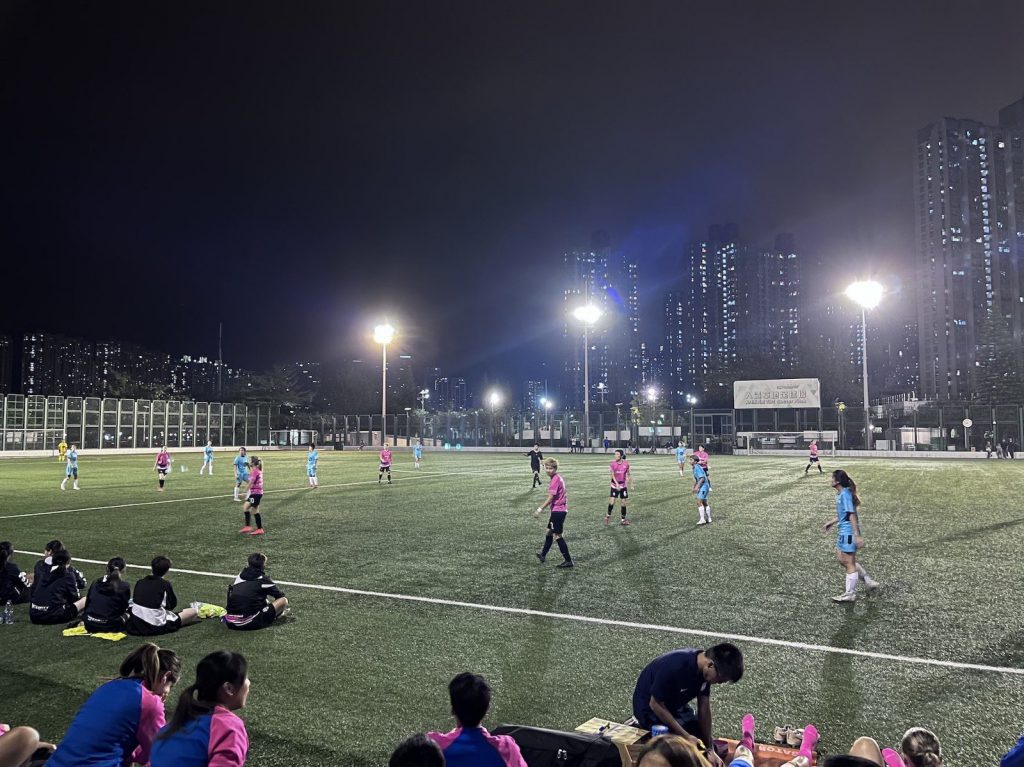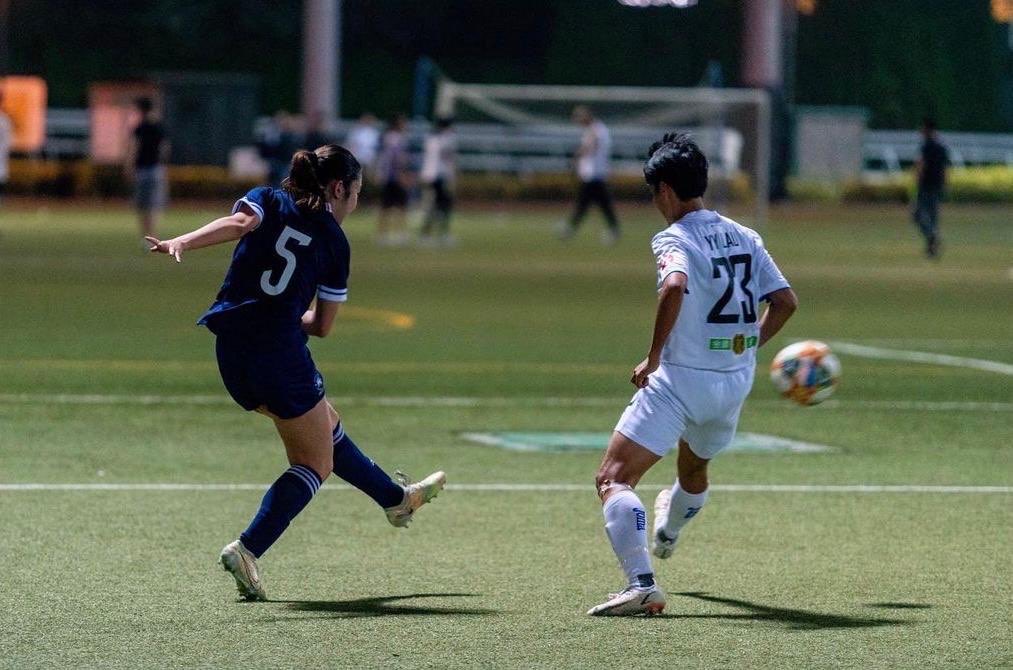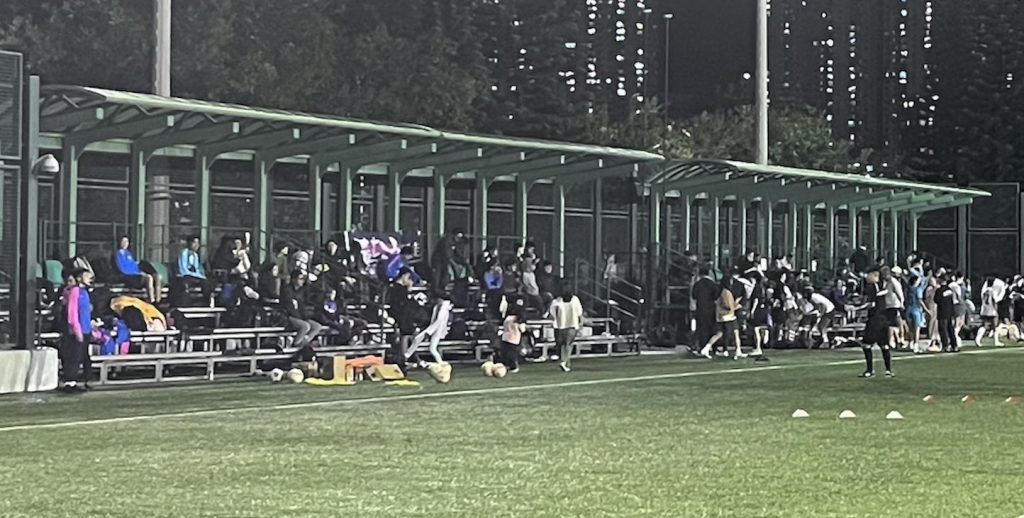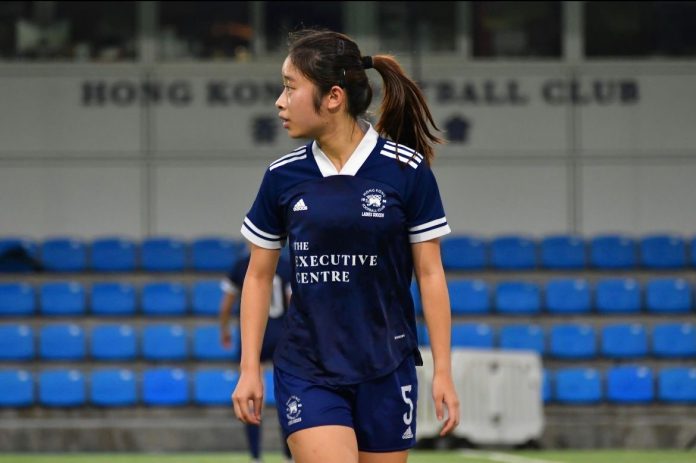Natalie Ma Ching-yi talks about her football journey and women’s football in Hong Kong.
By Liam Hordijk
Natalie Ma Ching-yi is a player for Hong Kong Football Club’s (HKFC) women’s team and a full-time student at the Chinese University of Hong Kong.
“In Hong Kong, the teams in the top women’s division are usually semi-professional or even non-professional,” Ma says.
“Sometimes, many people are unable to play the game in Hong Kong because they are away on work trips,” she adds, pointing out that she has had to skip training when having an examination the next day.
Ma competes in the top flight of women’s football in Hong Kong, known as the 1st Division of the Jockey Club Women’s Football League, which features eight teams in a 17-game season. Players typically train two to three times a week with their club.
This is unlike the top flight of men’s football in Hong Kong, the BOC Life Hong Kong Premier League (HKPL), which is a professional league with 11 teams.
“Kitchee started offering part-time contracts [two seasons ago], and 24/7 Football Club also gives part-time contracts. Chelsea FC Soccer School (HK) has a travelling subsidy for its players,” Ma says, but also points out these things are not league-wide and she has neither.

Ma discloses she does not know the exact amounts female footballers with part-time contracts get paid, but says it depends on ability and these players have a fixed salary and get money every time they play.
Ma says she has to pay HKD $100 (USD $12.8) monthly to play for HKFC, though this is unique to HKFC as it is a membership club.
However, Ma believes it is unrealistic for women to ask for professional contracts like men, because men’s football in Hong Kong generates more revenue for sponsors and clubs.
“Male footballers get more fans and audiences, so they have more resources than female footballers. In general, people support men’s sports more than women’s sports,” the 19-year-old footballer says.
Other issues faced by female footballers include gameday pitches being remote and sometimes in a bad condition.
“I remember once we played in Fanling [recreation ground]. It was real grass and then there were holes in the pitch,” Ma says, adding that games have even been cancelled due to bad pitch conditions.
Also, balls for training and matches are not standardised in weight and texture, which affects the way a player should kick it. Before each game, both teams will offer a training ball of their own and the referee will decide which one to play with.
“Say we are playing against a team and we use their ball, they get the advantage because they are used to their ball and we are new to it. Standardising the balls is already a thing done by HKPL and other leagues,” Ma says.
Passion for Football
Despite these troubles, Ma still wants to play football. She has loved the sport since she was five years old for its creativity after she saw the matches her father was watching on television.
“It is a really fun game because you can score from anywhere. People might say football is boring because 22 players go for the same ball, but because of the number of players, there are lots of formations and combinations that we can do. That is what got me into football,” she says.
Ma even faced opposition from her mother to play when growing up, which she says is part of a wider perception in Hong Kong towards women’s football.
“My mom thought I would become a tomboy by playing football,” Ma says.
“My parents wanted me to play basketball and swimming more than football so they enrolled me in summer courses to try different sports to replace football. In their mind, they are the same as they are all sports,” she adds.
Eventually Ma’s parents gave in since her joy from football was much bigger than for other sports and she joined the U18 squad of Chelsea FC Soccer School (HK). By the time she began playing organised football, she was already 12 years old.
“Since the players there all started playing football really early in their life, like when they were three, they are really good, while I struggled for quite a while,” she says.
After two years at Chelsea FC Soccer School (HK), she transferred to the U18 squad of HKFC. Ma then successfully tried out for the senior squad and made it into one of the top eight teams in Hong Kong women’s football.

Good Experiences
For Ma, her happiest moment as a player was earlier this year when she got past three defenders by herself to score a goal. She also managed to score last season from near the sideline.
“Playing is a good thing because you can get a sense of achievement,” she says, adding she enjoys challenging herself to improve and fight for her spot on the team.
Ma reveals that the number of spectators for HKFC games is normally 50 to 100.
But she experienced a stronger audience turnout of around 300 spectators when playing in the 3rd place final of the FA Cup – the premier knockout competition for women’s football in Hong Kong – in June this year at Kowloon Bay Park.

Ma points out that the 1st place final between Kitchee and Chelsea FC Soccer School (HK) had around 500 spectators.
“I remember the stands were nearly full,” she says.
Future of Football
Ma says she hopes to keep playing football throughout her time at university and even after she starts working. She has also expressed her desire to be a part-time football coach on the weekends.
She encourages people with an interest in the sport to join.
“For people who do not have the courage to start, they should not be scared. Everything starts with trying,” she says.
“I noticed lots of players have started playing organised football recently and that lots of beginners went to the trials of division three teams,” she adds.
As more players join the sport and the talent pool expands, the quality of play at the top flight of women’s football increases and the division becomes more competitive and entertaining, leading to more spectators, revenue, and resources.
But for this to happen, Ma believes more has to be done to promote opportunities for women’s football in Hong Kong.
“Not many people know about division one football. For example, we only get to post about the teams’ tryouts on social media, but we don’t have many followers. It is hard for newcomers to the sport to break into the football circle or to get started,” she says, adding that people have to be active in seeking opportunities.
“Subsidising travelling expenses for players can enable those who have financial difficulties to play,” Ma says.
Edited by Amelie Yeung
Sub-edited by Eve Qiao







































